There’s a quiet decision you’re making every day, even if you don’t realize it. Behind your to-do list, your schedule, and your career moves is a simple but powerful question:
Am I optimizing for time, money, or code right now?
Most of us cycle through all three at different stages. But understanding which one is driving your current decisions can help you get clearer, move faster, and feel more in control. It’s a lightweight diagnostic, but it packs insight.
Let’s break them down.
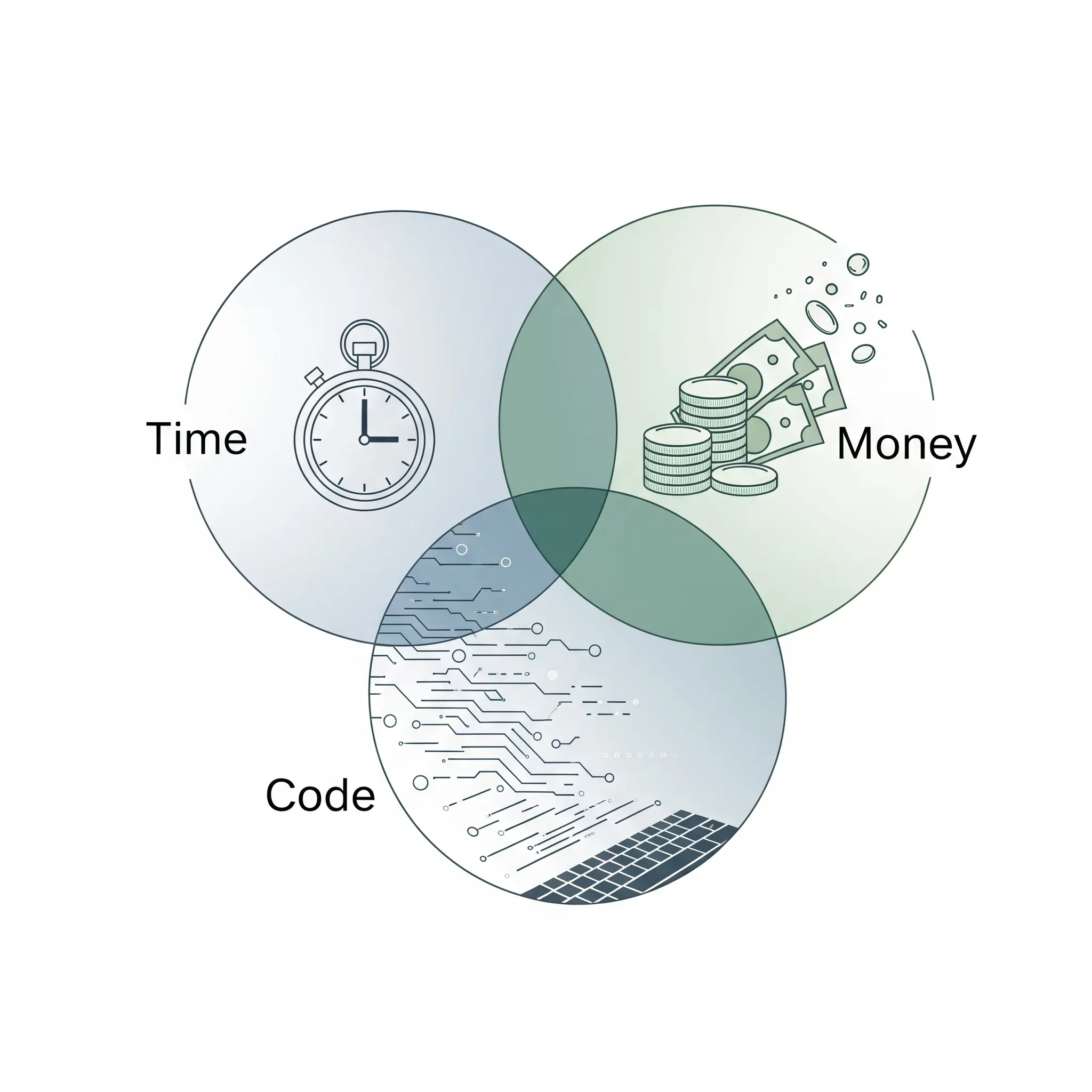
Time Mode
This is the season of space. You might be taking a break from the hustle, recovering from burnout, or carving out mornings to think again. Time mode isn’t lazy. It’s a strategic slowdown, a deliberate shift toward reflection, rest, or exploration.
In time mode, you say no more often. You might earn less. But you gain flexibility and the mental bandwidth to ask deeper questions. Many people use time mode to reconsider their direction, learn something new, or focus on relationships.
It’s worth noting: time mode can look unproductive from the outside. That’s okay. If you’re in it, lean in. It doesn’t last forever, and it often seeds your next leap forward.
Indicators:
-
You’ve cleared your schedule on purpose
-
You’re prioritizing health, reflection, or relationships
-
You feel drawn to rest but guilty for it
Money Mode
Here, the goal is straightforward: increase cash flow. Maybe you’ve taken on extra freelance work. Maybe you’re focused on scaling revenue. Or maybe you’re in a season of financial pressure and simply need to stabilize.
Money mode is high-output, high-constraint. Time is scarce. Decisions skew toward income over experimentation. And that’s not inherently bad. Many creators, devs, and founders spend long stretches here, especially early on.
But money mode has a trap: it can quietly become your default. One project leads to another, one client becomes three, and suddenly years have passed. Without awareness, you can become excellent at solving short-term problems while ignoring longer-term leverage.
Indicators:
-
You’re saying yes to more paid work, fast
-
You optimize for cash flow, not learning or freedom
-
You have little time or energy for deeper creative work
Code Mode
Code mode is about leverage. Whether you’re actually writing software, creating systems, or building digital products, the idea is the same: you’re investing in assets that compound.
This mode is exciting but often invisible. It’s heads-down. You might not be making money yet. You might not even know if what you’re building will work. But you’re okay with that because you’re optimizing for something future-facing.
Code mode is where side projects live. It’s where tools and products are born. But it can also become a trap if you never ship, never test, and never return to the world.
Indicators:
-
You’re building something you want to scale
-
You’re fine with lower income in the short term
-
You’re often learning, experimenting, or iterating
Can You Be in More Than One Mode?
Yes, but not equally. Most people have a primary mode and sometimes a secondary mode. For example, you might be in money mode during the day, while building something in code mode at night. That works.
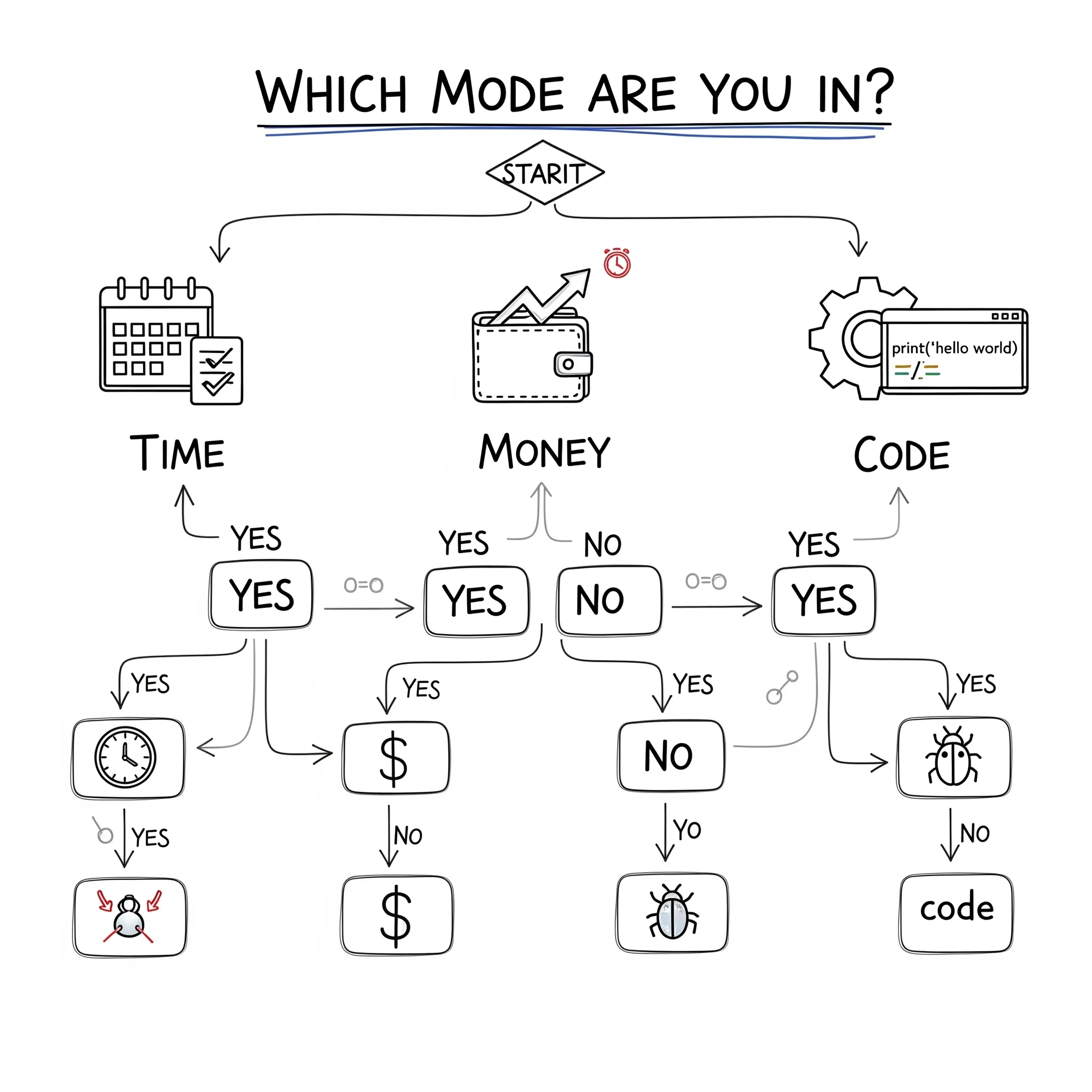
What doesn’t work is trying to optimize for all three at once. You end up context-switching, burning out, or making little real progress. Instead, ask:
Which one am I really optimizing for right now? And what do I need to protect to stay in that mode?
When to Switch Modes—and Why
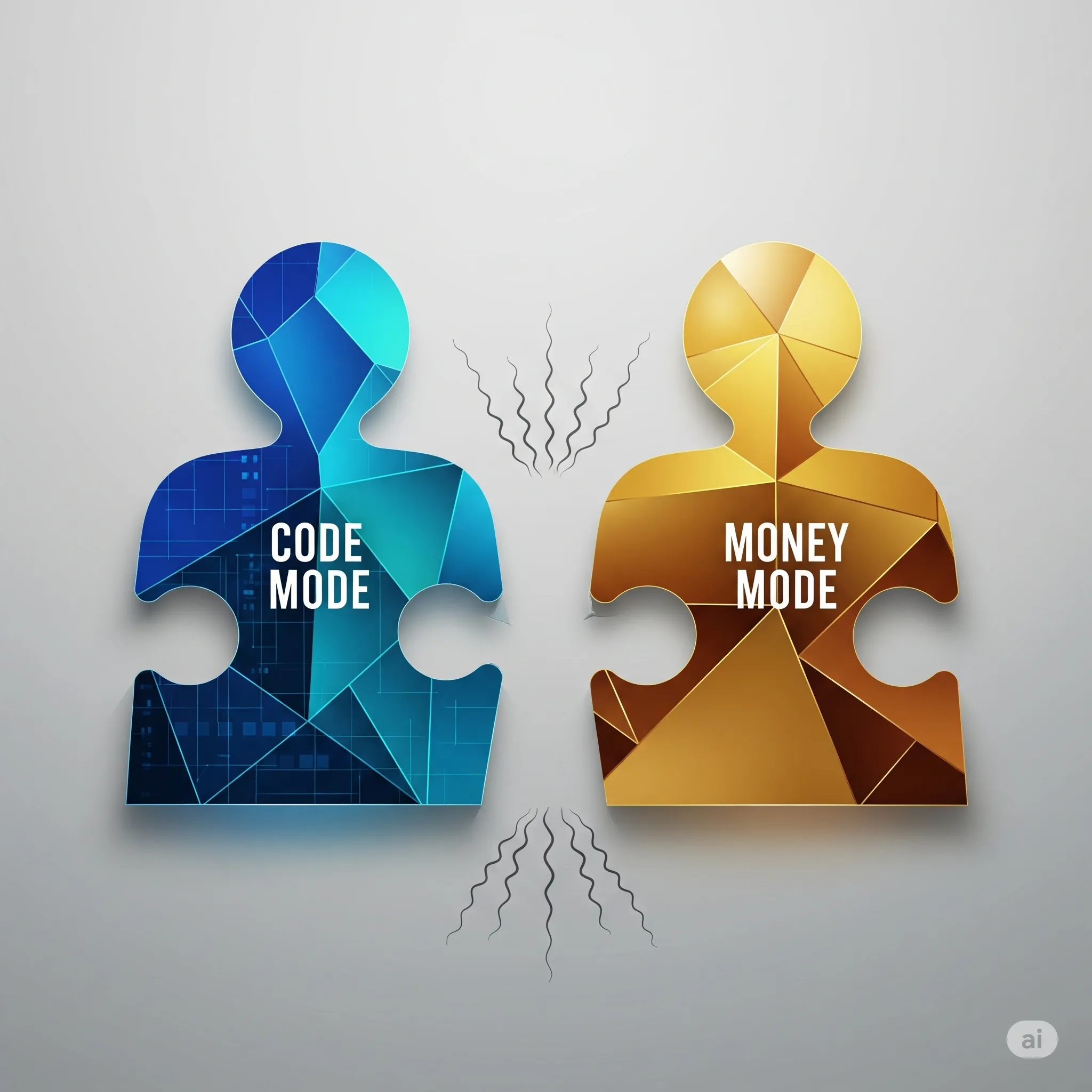
Each mode has value, but they aren’t meant to be permanent. Here are signs it might be time to shift:
Time Mode Fatigue:
-
You feel restless, underutilized, or overly isolated
-
Rest is no longer refreshing
Money Mode Fatigue:
-
You’re earning well but feel creatively flat
-
You don’t know what you’re building toward
Code Mode Fatigue:
-
You’ve been building without feedback or traction
-
You’re stuck in perfectionism or overengineering
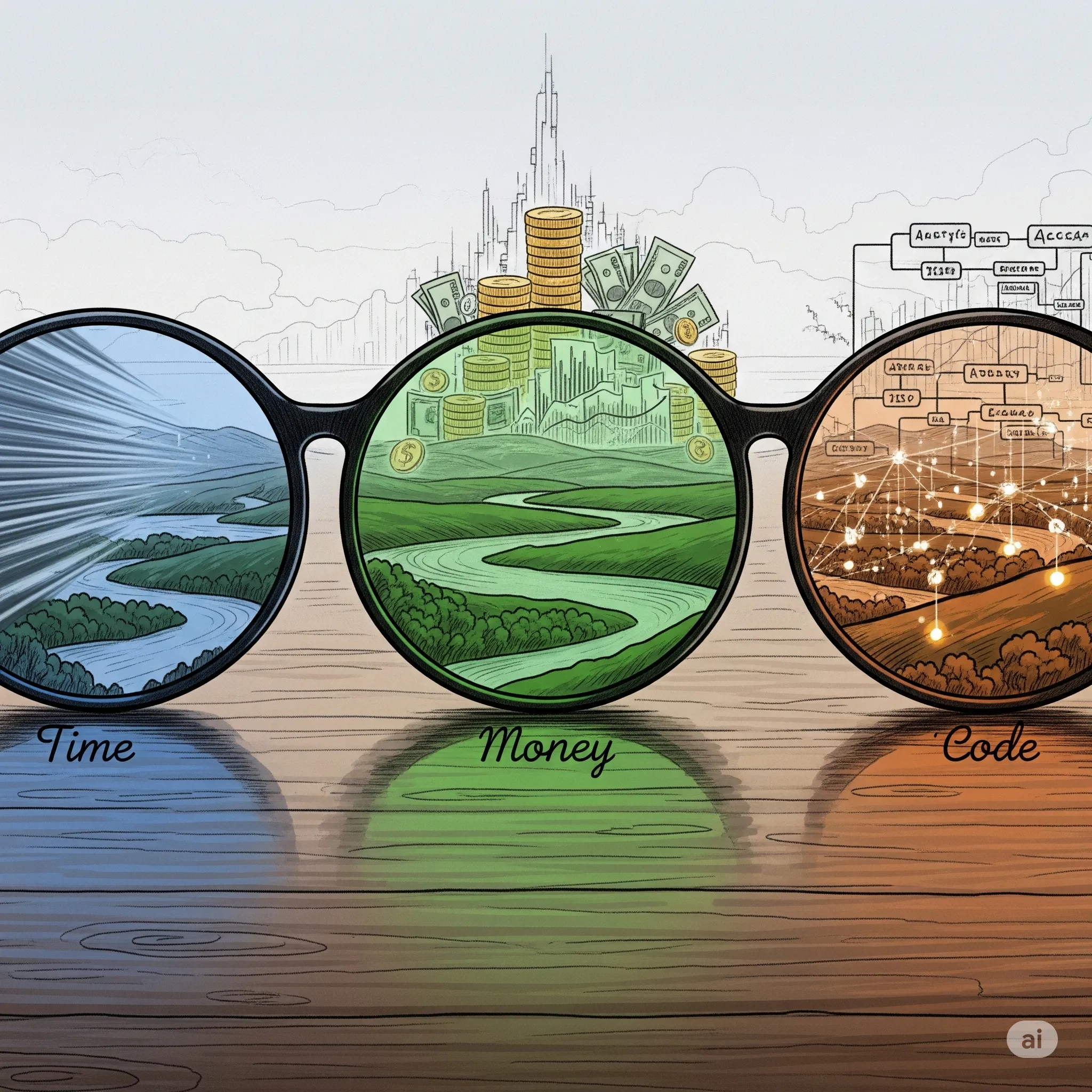
Switching modes doesn’t mean abandoning your goals. It means realigning with what matters now. Often, your goals are better served from a different vantage point.
Getting Stuck: Common Mode Traps
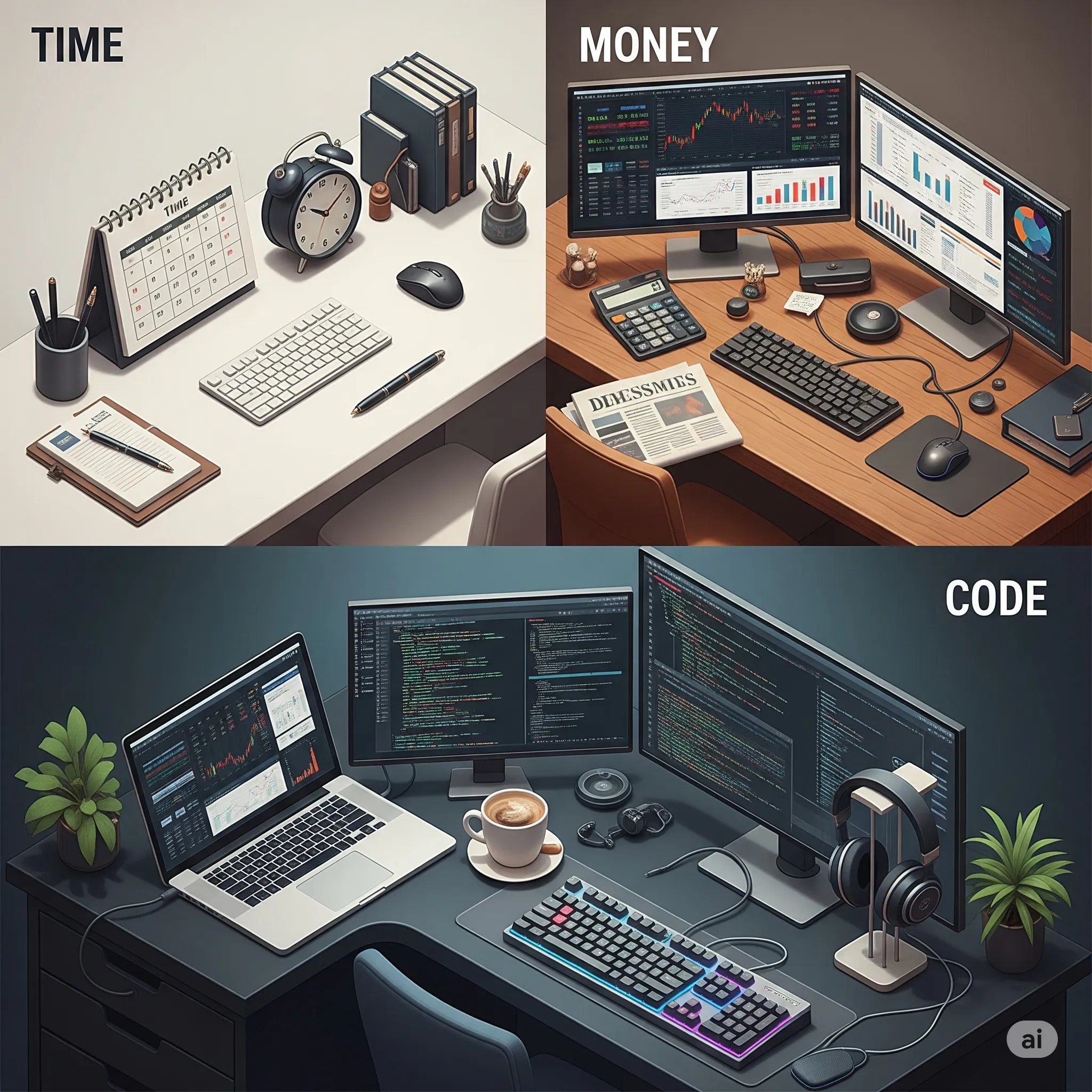
Each mode has a common failure mode. Awareness helps you avoid getting stuck.
The Money Grind Loop: You take one gig, then another, then a third. You’re busy, and the money’s fine, but you never build anything that frees you from the cycle.
The Automation Illusion: You chase freedom by systematizing everything (time mode meets code mode), but end up spending more time tweaking tools than doing meaningful work.
The Build-and-Burn Trap: You live in code mode, never ship, then scrap everything and start over. It feels like progress, but nothing ever gets to market.
Getting unstuck usually means pausing to ask: What was I optimizing for originally, and what am I actually doing now?
Real-Life Mode Maps
Here are a few quick sketches of how people move between modes in real life:
Selena, 28, UX Designer
-
Year 1: Full-time job, nights in code mode (building portfolio)
-
Year 2: Freelancing (money mode)
-
Year 3: Sabbatical to explore self-employment (time mode)
Aaron, 41, Software Engineer
-
Years 1-10: Corporate role (money mode by default)
-
Year 11: Shifted to code mode to build internal tools
-
Year 12: Quit to launch SaaS product
Priya, 33, Solopreneur
- Alternates quarters: Q1 in code mode (building), Q2 in money mode (consulting), Q3 in time mode (travel + reset)
These aren’t prescriptive. But they do show how dynamic this framework can be. Nobody gets the mix perfect. What matters is noticing when it’s time to rebalance.
Planning Ahead: Thinking in Seasons
Rather than thinking in terms of permanent states, consider working in seasons. A three-to-six month sprint in one mode can create the space, capital, or tools you need to enter the next.
Try asking yourself:
-
What am I optimizing for this season?
-
What will I need to deprioritize to make it work?
-
What would success look like three months from now?
You don’t have to get it perfect. But when you choose your mode intentionally, you give yourself permission to focus. And focus, more than anything, is what moves things forward.
References
-
Newport, C. (2016). Deep Work: Rules for Focused Success in a Distracted World. Grand Central Publishing.
-
Gilkey, H. (2020). Mind Management, Not Time Management.
-
Sahil Lavingia, @shl on Twitter, regularly discusses money/code/time trade-offs for indie creators.
-
"The Paradox of Choice" by Barry Schwartz explores decision fatigue and optimization costs.
-
Paul Graham's essays (e.g. "Maker's Schedule, Manager's Schedule") for context on time constraints and productivity.
-
Natasha Che on burnout cycles and identity reinvention, Medium archives.
-
"How to Make Wealth" by Paul Graham (2004) touches on code as leverage and money mode trade-offs.